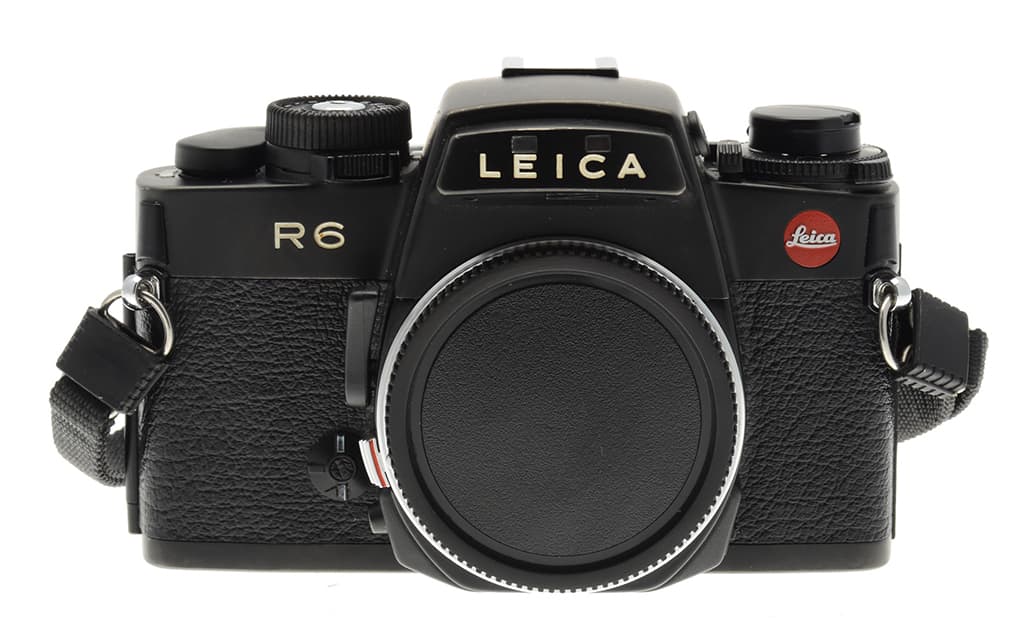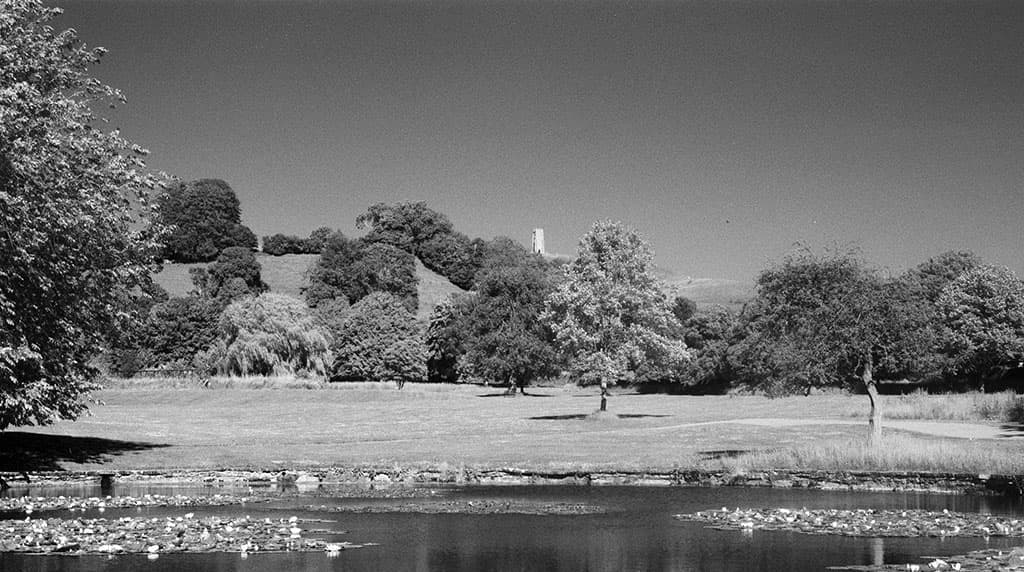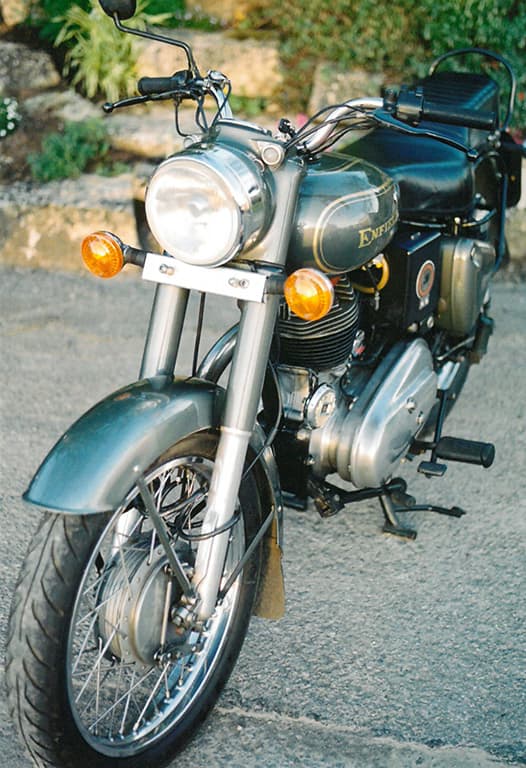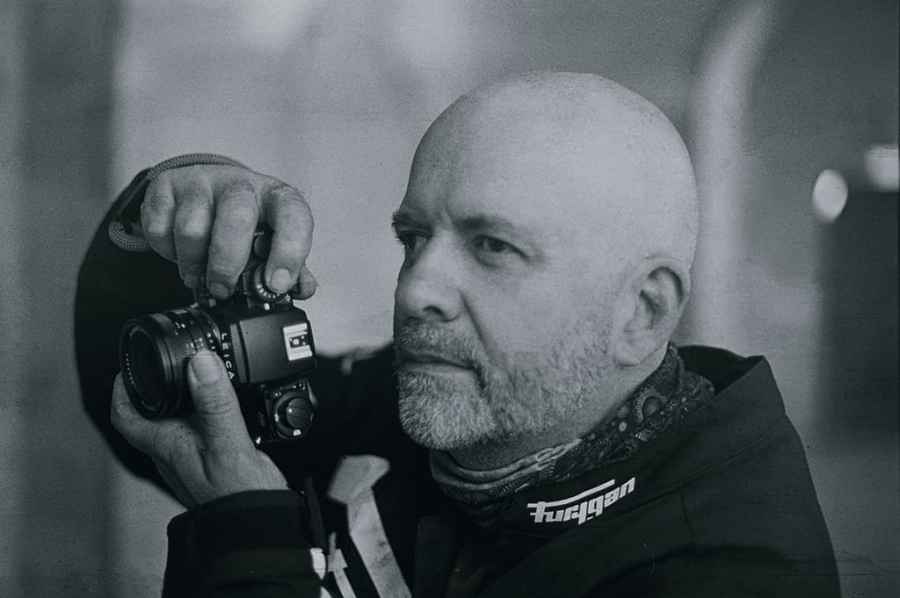Geoff Harris reflects on recently buying the mechanical Leica R6 film SLR and associated lenses – did he bag a bargain or end up paying a premium for that coveted red dot?
Leica R6 at a glance
* Manual exposure 35mm film SLR
* Metering via match-diode viewfinder display
* TTL flash metering
* Depth of field preview
* Mirror lock-up
* Motor drive option
* £200-£1000 depending on (used) condition
When considering the options for a relatively affordable, quality film SLR, Leica wouldn’t be the first name on a lot of people’s list. A Nikon F, Olympus OM-1, maybe, but a Leica? While the name is strongly associated with pricey M series rangefinders, the company also produced R series SLRs from 1980 to 1992, along with a decent range of quality, R series lenses.
Eventually technology moved on, and Leica refocused its efforts on rangefinders and, of course, digital, but that’s another story.
After various experiments with SLRs featuring program modes and other photographic aids, Leica decided to go back to basics in 1988 with the R6, the first mechanical, manual-exposure-only SLR produced by the company since the Leicaflex SL2 ceased production.

Geoff with his R6. Picture credit: Ben Brain
R you for real?
As a big fan of the Leica CL digital mirrorless camera, I was keen to try some older Leica film models. Sadly, I didn’t have a spare three grand lying around for a classic Leica M6 body, which is when I started to consider a Leica R series SLR.
Our old friend Google convinced me that I hadn’t totally lost my marbles, and there appeared to be several supportive forums, including an active Facebook group, who could answer my questions. So why did I decide to go for this mainly mechanical SLR, rather than one with autoexposure or, indeed, autofocus?
Maybe the buying decision was fed by insecurity, some deep-seated need to ‘prove’ to myself and others that I could still take a decent photo without all the convenience and crutches/hand-holding you get with digital.
Or maybe it was a desire to get back to a more ‘pure’ photographic experience. As a digital photographer, both for my day job and as a creative and therapeutic release during my time off, I had become very trigger-happy.
A day’s shooting, particular pre-pandemic in an exotic location, would generate a tsunami of raw files which I’d then have to download and work through. I was succumbing to digital photography overload and it was getting stressful.
So, I thought shooting film would not only slow me down, but also encourage me to focus on quality rather than quantity – and get more prints done.
While you can get decent film relatively cheaply from suppliers such as Analogue Wonderland, you definitely become more cost-conscious as you approach 36 exposures (of course, I could shoot digitally with a very small capacity memory card, but it’s not quite the same, or indeed, as much fun).
Caveat emptor
Another big attraction was the chance to get my hands on older, but still high-quality, R series manual focus lenses which I could also use on my digital Leica CL via an adaptor.
Fast forward to this spring and I find myself paying what seemed a very reasonable £500 for a supposedly ‘mint’ Leica R6 and 50mm f/2 Summicron lens off a private seller on Gumtree.
Let me say from the start that yes, I did take a risk here and it didn’t entirely pay off; it turned out there were some age-related issues with the camera, particularly with the shutter speed dial and light seals, which were promptly and efficiently fixed by Ffordes Photographic. The repair bill wasn’t huge, but it was a salutary lesson.
In hindsight, it would been wiser to pay more and buy an R6 from a reputable, specialist dealer, such as Ffordes, who would have checked it out first. Although I got off relatively lightly, it’s definitely a case of let the buyer beware when buying older film cameras!
 Popular mechanics
Popular mechanics
With the niggles fixed, the Leica R6 has been an enjoyable camera to use. Apart from TTL flash and simple built-in metering, the camera is, as described, pretty much entirely manual which is scary but also reassuring.
The camera functions perfectly well without the (easily obtainable) LR44 batteries, so long as you can live without onboard metering; indeed Salgado chose one to cover the burning of the Iraqi oil wells in 1991 because of its bullet-proof build quality. The R6 is certainly a tough best, with a strong die-cast aluminium body and brass bottom cover. It looks cool too, with a classy leatherette finishing.
Compared to the plethora of buttons and dials you get on a modern DSLR or mirrorless camera, the R6’s design is pretty minimalist. On the top is the hotshoe, shutter speed dial and a hinged film rewind crank, along with various windows for selecting the metering (spot or evaluative), ISO speed, exposure compensation and other essentials.
There’s also a useful dioptre to ensure you get the most from the wonderfully bright viewfinder. The buttons are sturdily made too, although the film rewind lever feels a little plasticky.
Loading film takes some practice, as you are supposed to slide the end of the film into the relevant slots on the take-up spool before pulling the film over to the left and locating the cartridge in the chamber. The idea is that you can change film quickly with one hand, but it still feels a bit fiddly. Manually rewinding the film is, fortunately, a more obvious process.

Summicron-R 50mm f/2 lens, Portra 800 film
Meter made
In use, I generally find the Leica R6 a delight to use. It’s weighty and solid-feeling in the hand without being unduly heavy (625g), and easy to hold steady.
The shutter speed dial is easy to adjust, as is the aperture on my R series 35mm and 50mmm lenses (more about those later) – the settings appear in the bottom of the finder and are easy to read. I find the exposure compensation slider a bit fiddly, but at least it can be locked, and setting the film speed is child’s play.
The metering seems pretty accurate so far, though I am very aware of the camera’s age, so I sometimes double-check the exposure reading I am getting from my Leica CL too – or take along Seikonic light meter.

Summicron-R 50mm f/2 lens with red filter, JCH Street Pan film
Two arrow-shaped triangular LEDs indicate over or under-exposure, with a single red dot indicating the ‘correct’ exposure and you soon figure it out. Other useful extras include a depth-of-field lever, self-timer for old-school selfies and a cable-release socket, along with the ability to add a motor winder or drive.
Probably the biggest drawback of the R6 is its limited shutter speed. You are limited to 1/1000th sec, although this is not a major problem for the kind of street and documentary/travel photography I favour.
Leica addressed this with the R6.2, produced between 1992 and 1997: this raised the top shutter speed to 1/2000 and included an improved TTL flash mode, along with the ability to meter flash exposure at any shutter speed from 1/100 to B (Bulb).

The 50mm Summicron is impressively sharp, as seen with this plaque in Bath, shot hand-held from street level
The lenses
While the camera has been nice to use, I have been even more impressed by the quality of the lenses, particularly the 50mm f/2 Summicron. They are fast, bright and bulletproof, with wonderfully tactile aperture rings, and although they don’t have the most up-to-date design or coatings, I am more than happy with the results.
I bought a cheap ‘Fotasy’ R to L adaptor off eBay so I can use them on my Leica CL and again, the results are decent – helped by the quality focus peaking on the digital Leica.

The Summicron-R 50mm also delivers great portrait results when used on a digital Leica CL via an adaptor
Returning to the older Leica, I recently bought an Elmarit 35mm f/2.8 for £290, so compared to M series lenses, you can still pick up decent R series glass for sensible money. This might be becoming more difficult, however, as apparently they are also in high-demand from cinematographers after the vintage look.

Elmarit 35mm lens, Kosmo Agent Shadow 400 film
Conclusion
While the learning curve with my R6 has sometimes been steeper than expected and there were some teething problems at the beginning, I don’t regret buying one.
You can pick up comparable film SLRs and lenses cheaper, but the R6 has tons of character and heritage – it’s also something different. As for the lenses, there is still a lot of online debate whether an R series 50mm Summicron is as ‘good’ as the much pricier M-mount version, but it’s good enough for the money I paid.

Summicron-R 50mm f/2 lens, Portra 800 film
Thanks to adaptors, R series lenses have a lot of life left in them, too. Buying into this set-up has slowed my photography down, in a good way, and made me less trigger happy, so it’s fulfilled its purpose. I’m not going to totally change back to film, but the R6 is a useful and fun alternative to my main digital cameras.
Returning to camera specifics, probably the best version to go for is the more flexible R6.2 or superb R7, so if you see one in decent condition at a sensible price, check it out. It’s wiser to buy from a specialist dealer however so you get some kind of warranty, unless you know exactly what you are looking for.
Pros:
* Bulletproof build quality
* Shutter can work without battery
* Basic but effective on-board metering
* Quality, reasonably priced R series lenses
* Good online support from independent forums
Cons:
* Shutter speed limited to 1/1000sec
* Slightly fiddly film loading
* R series lenses getting pricier








